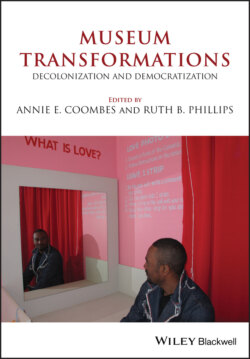Читать книгу Museum Transformations - Группа авторов - Страница 55
Exile Tibet The museum of the Museum on the Roof of the World
ОглавлениеYour bus to Dharamsala races along State Highway 22 when suddenly on your right you see some striking architectural forms: you are driving past the Khalsa Heritage Complex. In a flash the buildings are gone, and you have another hour of travel across Punjab’s featureless plain. Then the climb into the Himalayas begins. Soon the air cools, and neem and peepul trees give way to pine forests. You are winding your way up to “Little Lhasa,” the small Himalayan town of Dharamsala that is the spiritual and political center of the Tibetan exile population in India. Here, among the many museums, cultural centers, and monasteries dedicated to preserving Tibet’s traditions lies a second museum in India that has been inspired by Yad Vashem. What an odd coincidence that these two institutions, genealogically connected to each other by their common ancestor in Jerusalem, yet utterly dissimilar from each other in every respect, should lie 100 miles apart on the same highway, as though threaded together like two beads on a string.
In Hindi “Dharamsala” literally means “refuge,” and since 1960 this little Himalayan town has been a home to a nation of refugees. After a failed uprising in Lhasa in 1959, the Dalai Lama and one hundred thousand of his followers fled from Chinese-occupied Tibet to India. Dharamsala and its suburb, McLeodganj, eventually became the nerve center of the Tibetan exile community. The Central Tibetan Administration (the Tibetan government-in-exile) built its headquarters here, through which it cares for Tibetan refugees and disseminates information in support of the Tibetan cause. This has made Dharamsala the political hub of the Tibetan exile community. Over the years, this town and its surrounding hills and valleys have come to house scores of Tibetan Buddhist monasteries and nunneries, schools teaching Tibetan language, literature, and religion, orphanages for children who have been smuggled out of Chinese-occupied Tibet by their parents so that they can grow up within the fold of the Buddhist faith and Tibetan traditions, as well as numerous institutions dedicated to the documentation, study, and transmission of Tibetan cultural forms. This is also the place that the Dalai Lama has made his home. Dharamsala, then, has also become a place of pilgrimage for Tibetans, for sympathizers of the Tibetan cause, and for a global community of New Age and other Buddhists who come here seeking the salvaged remnants of the “authentic” Buddhist culture of old Tibet.
Many places in Dharamsala are proffered as substitutes for irrecoverable originals left behind in the motherland. Businesses are named “Shangri-La Hotel,” “Yeti Cafe,” “Stitches of Tibet Clothing Store,” invoking a real or imagined Tibet for the tourist or the exile. A nearby cultural complex in which apprentices learn the arts of thangka painting and icon-making is named Norbulingka, after the Dalai Lama’s looted summer palace just outside Lhasa.13 And the monasteries here are monasteries-in-exile, founded by refugee monks to continue the rituals and practices that were once performed at parent monasteries in Tibet destroyed during the Cultural Revolution. In Dharamsala, thus, there is the Namgyal monastery which replaces the one that used to be outside the Potala in Lhasa; the Tibetan State Oracle who once advised the Dalai Lama from the Nechung monastery in eastern Tibet now lives in the New Nechung monastery here; the Kirti monastery of Kham has been rebuilt in Dharamsala, and the Tse-Chokling monastery, which was formerly near Lhasa, preserves its traditions and teachings in a village nearby. These are but a few of the approximately two hundred monasteries-in-exile situated in south Asia – in India, Nepal, and Bhutan – many of which are named after the lost originals in Tibet.
In this geography that is haunted by loss, a thing is not simply itself but represents the salvaged fragment of something that used to be whole in an earlier time, in another place. If, in Clare Harris’s words, Tibet is the “museum on the roof of the world” – a place that has for so long been presented as a remote and isolated “domain of undisturbed traditionalism” – that it appears like a museumized relic (2012, 6), then Dharamsala presents itself as the “museum of the museum” – the place that salvages the cultural essence of Tibet-in-exile, even as the land called
